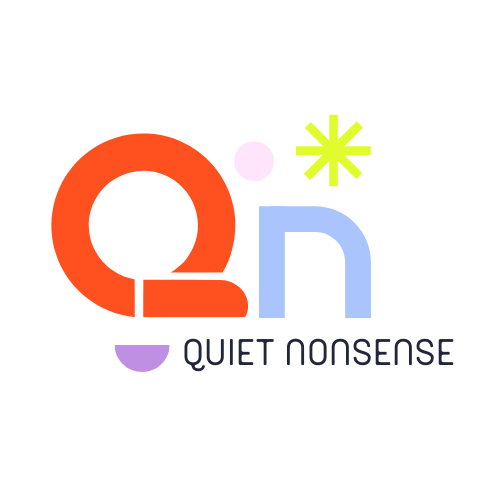The Psychology of Colors in Branding and Marketing: How to Make the Right Impression
When you think of your favorite brands, what’s the first thing that comes to mind? Chances are, a big part of that brand’s identity is its color scheme. Colors aren’t just for aesthetics; they evoke emotions, trigger reactions, and can even influence consumer behavior.
The psychology of color in branding and marketing is a powerful tool that helps businesses craft meaningful connections with their audiences. Let’s dive into how color psychology can make or break your brand and how you can use it to your advantage.
Understanding Color Psychology
Color psychology is the study of how colors affect perceptions and behavior. It’s rooted in the idea that colors communicate more than just visual appeal—they convey messages and emotions that impact how people view a brand and interact with its products or services.
For example, think about how a bright red logo makes you feel. It might evoke excitement or urgency, while a soft blue logo may communicate trustworthiness and calmness. Brands intentionally choose specific colors to resonate with their audience and convey the exact emotions they want associated with their product.
How Different Colors Affect Branding
Each color has its own set of associations. Here's a breakdown of some common colors and what they represent in branding and marketing:
Red: Often associated with excitement, passion, and urgency. Red grabs attention and can encourage action. It's a great choice for food, retail, and entertainment industries (think Coca-Cola, Target, and Netflix).
Blue: Blue is often seen as trustworthy, calm, and professional. It evokes a sense of security and reliability, making it ideal for tech companies, finance, and healthcare (like Facebook, Chase, and Pfizer).
Yellow: Yellow is a warm, optimistic color that evokes happiness and energy. It can draw attention, but it must be used carefully as too much yellow can be overwhelming. Brands like McDonald's and IKEA use yellow to feel friendly and inviting.
Green: Green is synonymous with nature, growth, and health. It communicates freshness and sustainability. Brands like Whole Foods and Starbucks use green to convey health, wellness, and environmental consciousness.
Purple: Often linked to luxury, creativity, and sophistication, purple gives off an air of exclusivity. It’s popular in beauty, fashion, and high-end products (think Cadbury and Hallmark).
Orange: A combination of red's excitement and yellow's optimism, orange is often used to create a playful and energetic vibe. It’s great for brands targeting younger audiences or those in creative fields (like Nickelodeon and Fanta).
Black & White: These colors are timeless and sophisticated, offering versatility and elegance. Black exudes luxury and exclusivity, while white can suggest simplicity and purity. Apple and Nike are prime examples of brands that effectively use black and white to create a minimalist yet high-impact brand identity.
The Importance of Color Consistency in Your Branding
Once you’ve chosen your brand colors, the next step is consistency. Colors should be used consistently across all touchpoints, from your website to your social media posts, business cards, and product packaging.
Consistency builds brand recognition and reinforces the emotions you want your audience to associate with your business. In fact, brands that use consistent colors across all platforms can increase their brand recognition by up to 80%!
How to Choose the Right Colors for Your Brand
Choosing the right color palette for your brand isn’t about personal preference; it’s about aligning with your target audience and the message you want to convey.
Here are a few tips to help guide your decision-making process:
Know Your Audience: Understand who your audience is and what resonates with them emotionally. For instance, if your target market is young adults interested in fashion, bright and trendy colors might be a great fit. If you're targeting business professionals, muted and sophisticated colors could work better.
Consider Your Industry: Different industries often have color associations. For example, blue is popular in tech, while green is commonly used in the health and wellness sector. Think about what’s expected in your industry and how you can stand out while still fitting in.
Test Your Palette: Once you've chosen your colors, test how they work together in various formats—website design, social media, email campaigns, etc. A color palette that looks great on paper might not always translate well to digital platforms, so make sure everything is visually cohesive.
Think About Emotion: Each color elicits a different emotional response. For example, red is energetic and bold, while blue is calming and trustworthy. Consider how your brand's colors will make people feel and how they align with your overall brand message.
The Quiet Nonsense Approach to Branding
At Quiet Nonsense, we know how important it is to make the right impression with your brand colors. We specialize in creating full branding packages, from custom logos to social media templates and website designs, all with your unique message and audience in mind.
Whether you're looking for a simple refresh or a complete branding overhaul, our expert team is here to help you develop a color palette that resonates with your audience and sets you apart from the competition.
Ready to create a brand that stands out? Our graphic design and branding services can take your vision to the next level.
Reach out to us today to get started and let’s craft a brand identity that captures attention and builds lasting connections.




